Formula C5H8O2 Appearance Clear liquid | Density 1.06 g/cm³ | |
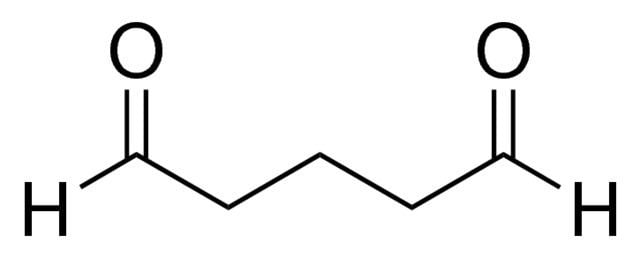 | ||
How to use glutaraldehyde opa neitralizer
Glutaraldehyde, sold under the brandname Glutaral among others, is a disinfectant and medication. As a disinfectant it is used to sterilize surgical instruments and other other areas. As a medication it is used to treat warts on the bottom of the feet. It is applied as a liquid.
Contents
- How to use glutaraldehyde opa neitralizer
- Testing for glutaraldehyde k 1186
- Disinfectant
- Fixative
- Wart treatment
- Safety
- Chemistry
- Production and structure
- References
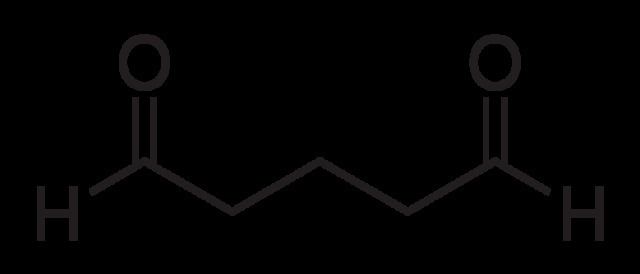
Side effects include skin irritation. If exposed to large amounts nausea, headache, and shortness of breath may occur. Protective equipment is recommended when used. Glutaraldehyde is effective against a range of microorganisms including spores. It works by a number of mechanisms.
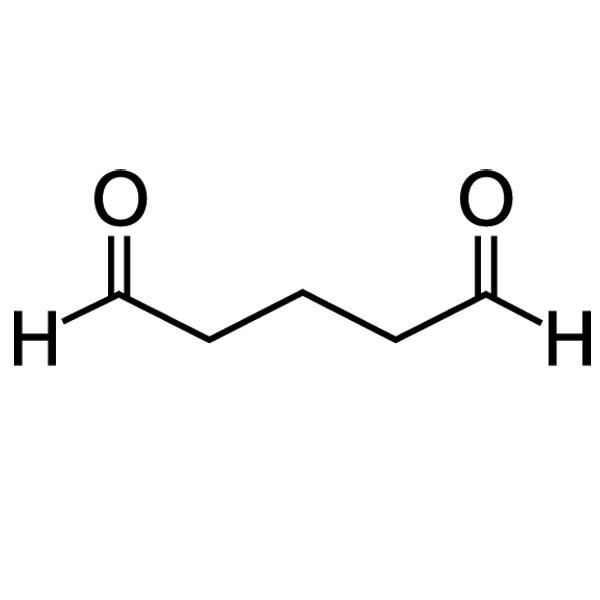
Glutaraldehyde came into medical use in the 1960s. It is on the World Health Organization's List of Essential Medicines, the most effective and safe medicines needed in a health system. The wholesale cost in the developing world is about 1.50 to 7.40 USD per liter of 2% solution. It is sold under a number of brand names including Cidex. There are a number of other commercial uses such as leather tanning.
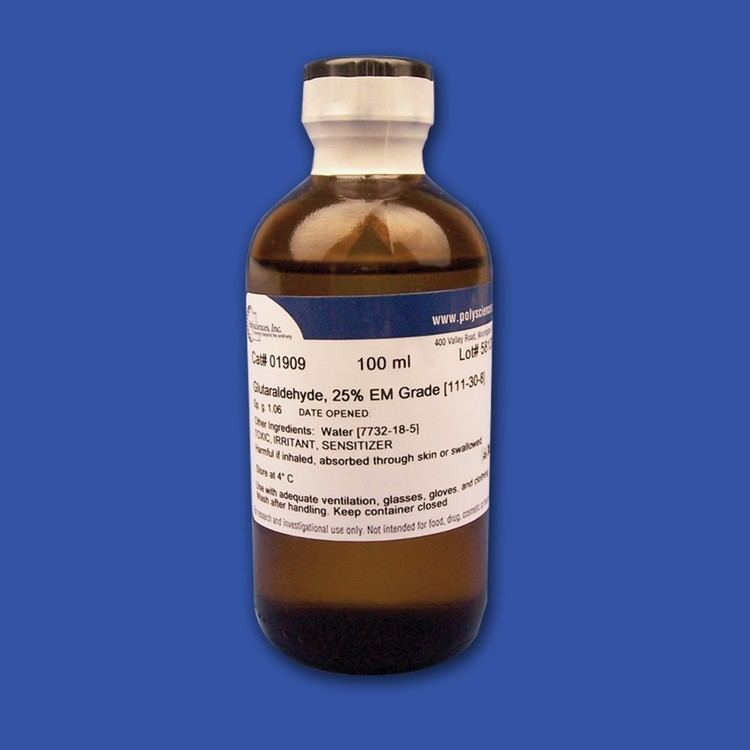
Testing for glutaraldehyde k 1186
Disinfectant
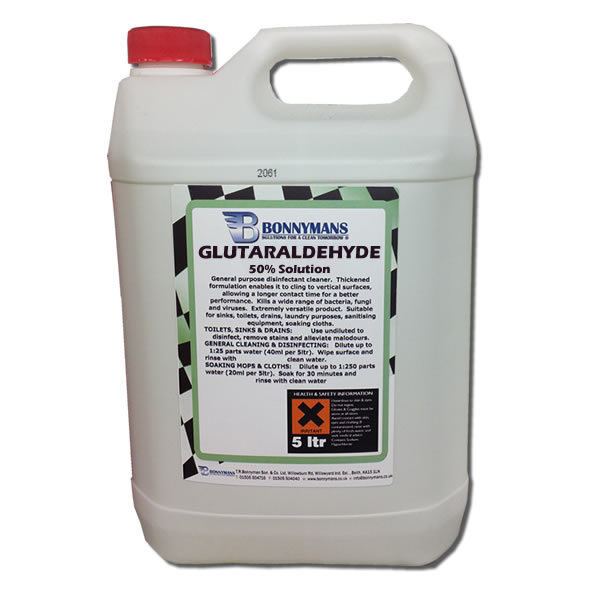
Virtually all applications of glutaraldehyde exploit its high reactivity toward proteins. Being nonvolatile and bifunctional, glutaraldehyde is often preferred to the less expensive formaldehyde. It reacts with amines, amides, and thiol groups in proteins.
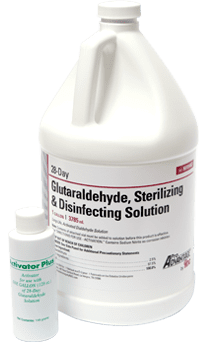
A glutaraldehyde solution of 0.1% to 1.0% concentration may be used as a biocide for system disinfection and as a preservative for long term storage. It is a sterilant, killing endospores in addition to many microorganisms and viruses.
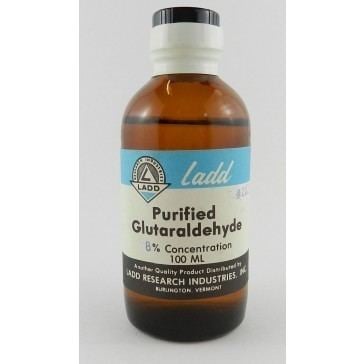
Glutaraldehyde is a component of hydraulic fracturing "fracking" fluid. It is included in the additive called Alpha 1427, as a biocide. Bacterial growth can impair the production of oil and gas wells, and can be introduced into the formation from various sources including the source water, proppant, and polymers used in the hydraulic fracturing process. Glutaraldehyde is pumped as a liquid additive with the fracturing fluid to reduce or eliminate this source of formation and fracture conductivity damage.
Fixative
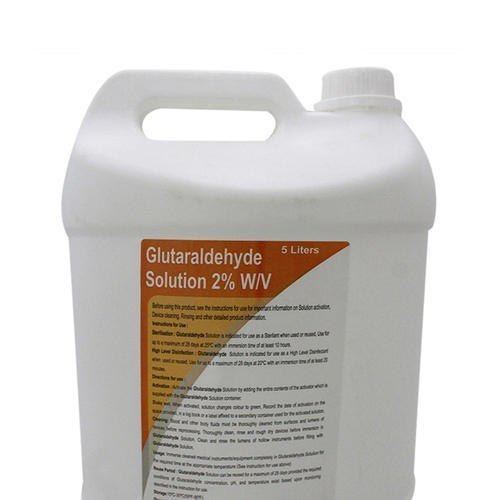
Glutaraldehyde is used in biochemistry applications as an amine-reactive homobifunctional crosslinker and fixative prior to SDS-PAGE, staining, or electron microscopy. It kills cells quickly by crosslinking their proteins and is usually employed alone or mixed with formaldehyde as the first of two fixative processes to stabilize specimens such as bacteria, plant material, and human cells. A second fixative procedure uses osmium tetroxide to crosslink and stabilize cell and organelle membrane lipids. Fixation is usually followed by dehydration of the tissue in ethanol or acetone, followed by embedding in an epoxy resin or acrylic resin.
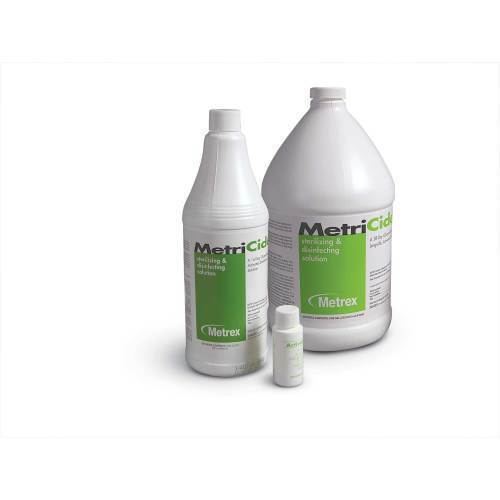
Another application for treatment of proteins with glutaraldehyde is the inactivation of bacterial toxins to create toxoid vaccines, e.g., the pertussis (whooping cough) toxoid component in the Boostrix Tdap vaccine produced by GlaxoSmithKline.
In a related application, glutaraldehyde is sometimes employed in the tanning of leather and in embalming.
Wart treatment
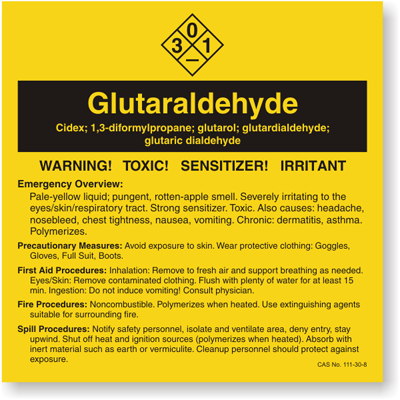
A solution of glutaraldehyde, typically of 10% w/w, is sold under various trade names to remove common and plantar warts. It is said to inactivate viruses and bacteria, and to dry the skin, facilitating physical removal of the wart. Trade names include Diswart Solution and Glutarol.
Safety
As a strong sterilant, glutaraldehyde is toxic and a strong irritant. There is no evidence of carcinogenic activity.
Chemistry
It is an organic compound with the formula CH2(CH2CHO)2. A pungent colorless oily liquid. It is mainly available as an liquid, and in these solutions the aldehyde groups are hydrated.
Production and structure
Glutaraldehyde is produced industrially by the oxidation of cyclopentene and by the Diels-Alder reaction of acrolein and methyl vinyl ether followed by hydrolysis.
Like other dialdehydes (e.g., glyoxal), it does not exist as the dialdehyde in water, but as the hydrate. These hydrates adopt several equilibrating species.
Monomeric glutaraldehyde can polymerize by aldol condensation reaction yielding alpha, beta-unsaturated poly-glutaraldehyde. This reaction usually occurs at alkaline pH values.
